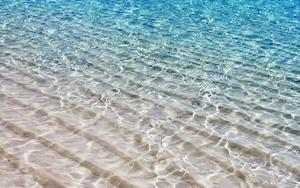Scientists at the National Oceanography Centre (NOC) are partners in the Natural Environment Research Council’s million pound COHBED project.
This project is studying the effect of the ‘sticky’ sugars produced by micro-organisms on the transport of sediment in rivers and estuaries, and in particular on the occurrence and development of ripples and dunes, by considering both laboratory and field data in the Dee Estuary.
Research, published recently in Nature Communications, shows that a much smaller amount than previously thought of this sticky substance, called extracellular polymeric substances (EPS), is required to dramatically slow down the development of ripples. This laboratory-based research was led by Bangor University in collaboration with scientists from the NOC and Universities of St. Andrews, Hull, Leeds and Plymouth.
“This discovery will feed into computer models and help improve the prediction of the movement of sand and mud in rivers, estuaries and coastal waters, the results of which are used by government agencies to mitigate the effects of coastal storms and river floods” explains lead author Dr. Jonathan Malarkey of Bangor University.
Professor Peter Thorne, from the NOC, leading the Dee Estuary study in COHBED said “understanding the effects of biological impacts on sediment transport is central to modelling the evolution of many estuaries and coastal environments”.
Dr Jaco Baas, from Bangor University and principle investigator of the COHBED project, said “One of the main reasons for setting up this research project is that our knowledge of bedform behaviour is limited almost entirely to pure sand, despite most aquatic environments being mixtures of sand, clay and EPS. In order to fill this gap in knowledge the project required an innovative collaboration between biologists, oceanographers and sedimentologists”.

